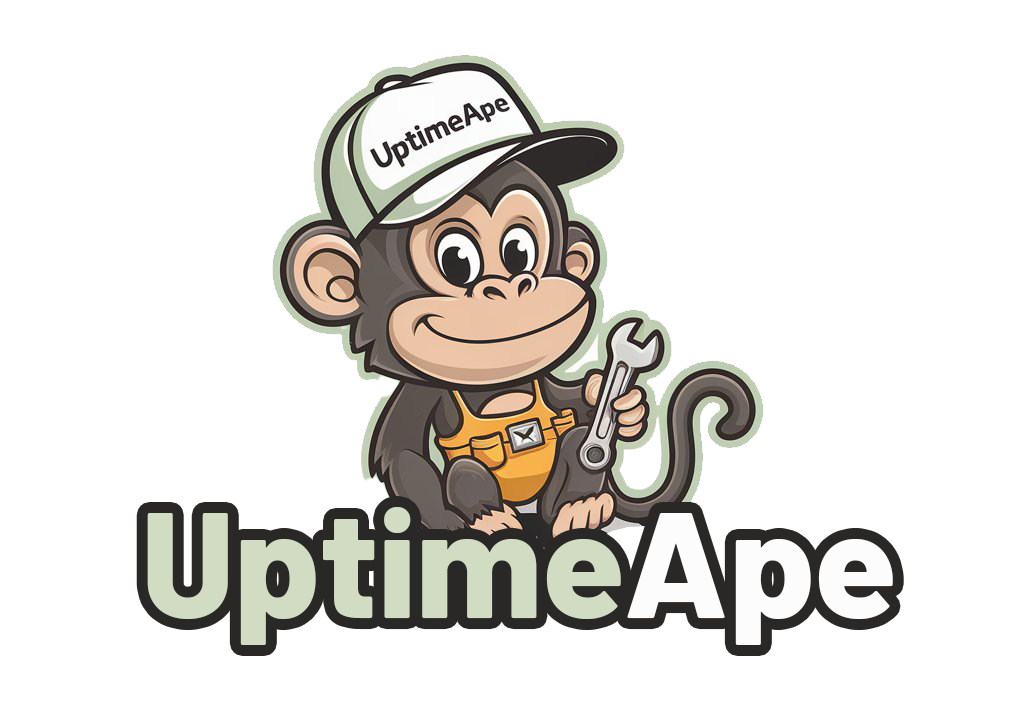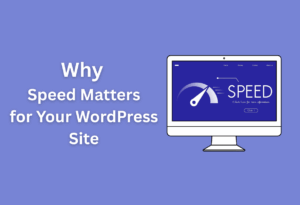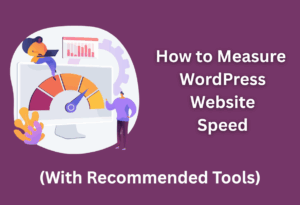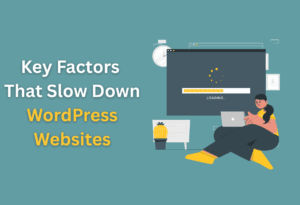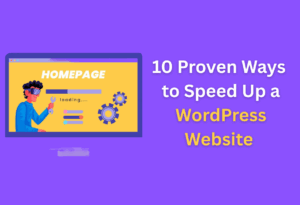Over time, you may have unknowingly adopted habits that slow down your website, affecting user experience and search rankings. In this post, we’ll explore six common pitfalls that hinder your site speed and provide practical solutions to help you optimize performance.
By addressing these issues, you can enhance your visitors’ experience and keep your site running smoothly. Let’s explore the mistakes you should avoid and how to fix them effectively.
Understanding Site Speed
The significance of site speed cannot be understated in today’s digital landscape. It refers to how quickly your website loads and responds to user interactions.
A fast site enhances the overall browsing experience, ensuring that visitors receive content without unnecessary delays. Site speed is assessed using various metrics, including page load time, time to first byte, and more, all of which contribute to user satisfaction and retention.
What is Site Speed?
With site speed, you measure how efficiently your web pages load and operate. It encompasses a range of factors, including server response time, file sizes, and third-party scripts. Essentially, site speed affects how users perceive your website and impacts their overall experience while navigating through your content.
Importance of Site Speed for SEO and User Experience
User experience is heavily influenced by site speed. If your website takes too long to load, visitors are likely to abandon it, leading to higher bounce rates. Search engines, particularly Google, consider site speed as a ranking factor, meaning faster sites are more likely to rank higher in search results.
For instance, studies have shown that even a one-second delay in site loading can lead to a 7% decrease in conversions. Moreover, a slow website negatively impacts your brand image, making it crucial to prioritize site speed.
By optimizing your site for speed, you not only improve user experience but also enhance your chances of ranking higher on search engines, ultimately driving more traffic to your site.
6 Common Mistakes That Hurt Site Speed
Even small missteps can significantly impact your site speed, causing potential visitors to leave before they’ve even explored your content. In this section, we will research into some common mistakes that can hinder your site’s performance and provide solutions to overcome them.
Large Image Sizes
One of the most frequent issues is having large image sizes on your website. High-resolution images can slow down your site’s load time, especially on mobile devices. Compressing and resizing images before uploading them can enhance performance significantly.
Excessive HTTP Requests
While HTTP requests are imperative for fetching resources, having too many can bog down your site’s speed. Each request adds loading time, hindering user experience. Minimizing the number of elements on your page can effectively reduce the overall requests, enhancing performance.
Hurt by excessive HTTP requests, your site could become sluggish, leading to frustrating experiences for visitors. You may have several images, scripts, or stylesheets, all requesting separate connections. Consolidating files, using CSS sprites, or even implementing lazy loading can drastically improve response times.
Poorly Optimized CSS and JavaScript
One common error is poorly optimized CSS and JavaScript files, which can increase load times. Unminified files or excessive code can unnecessarily slow down your site. Optimize and minify these files to ensure quicker load speeds.
Poorly optimized CSS and JavaScript can lead to inefficient rendering of your website, causing delays. Use tools to analyze your scripts and styles, identifying areas to compress or eliminate redundant code. Additionally, consider placing scripts at the bottom of your pages to allow faster content rendering for users.
Server Response Time Issues
Even if your site is well-optimized, slow server response times can severely diminish your speed. Factors such as hosting quality, server location, and server configuration contribute to this issue. Choose a reliable host that meets your performance needs.
Large server response times can frustrate users, especially during peak traffic periods. Evaluate your hosting plan and consider upgrading if the current setup cannot handle your site’s demands. Switching to cloud hosting or optimizing your backend can also alleviate response time delays.
Not Using a Content Delivery Network (CDN)
Time spent not using a CDN can lead to slower load times for users far from your server location. A CDN stores copies of your site across various locations, so data transfers happen more quickly for visitors. Implementing a CDN can significantly enhance your site’s speed.
Images and other content stored on a CDN are served from the nearest data center, reducing the physical distance that data must travel. This not only speeds up load times but can also distribute traffic evenly, decreasing server strain during high-traffic events.
Ignoring Browser Caching
Downplaying the importance of browser caching can also hurt your site speed. When you fail to leverage caching, browsers have to reload all resources on each visit, leading to unnecessary delays. Set proper cache policies to improve user experience.
Caching allows browsers to temporarily store elements like images and stylesheets, so returning visitors experience faster load times. Implement caching strategies, such as expiration headers, to minimize the re-downloading of resources and enhance site efficiency for repeat visitors.
Tips for Improving Site Speed
Once again, optimizing your website’s speed is important for user experience and SEO. Here are some effective tips to enhance your site speed:
- Regularly Monitor Your Site’s Performance
- Implement Lazy Loading for Images and Videos
- Use Asynchronous Loading for JavaScript
- Remove Unnecessary Plugins and Themes
After implementing these strategies, you will notice a significant improvement in your site’s performance.
Regularly Monitor Your Site’s Performance
Assuming you want your website to run efficiently, regular performance monitoring is important. This involves using tools like Google PageSpeed Insights or GTmetrix to check how quickly your site loads and identify any potential bottlenecks. By keeping an eye on your performance, you can promptly address issues that arise, ensuring a consistently fast user experience.
Implement Lazy Loading for Images and Videos
Implement lazy loading for your images and videos to improve site speed. This technique ensures that media files only load as they come into view or as a user scrolls down the page, rather than all at once during the initial loading. This not only speeds up your site load time but also conserves bandwidth, particularly for users on slower connections.
Your website will benefit from implementing lazy loading by reducing the initial load time, which leads to a better user experience. Users will be able to interact with your site more quickly, especially on pages with numerous images or videos. Additionally, search engines may favor sites that load efficiently, positively impacting your SEO rankings.
Use Asynchronous Loading for JavaScript
Any scripts that you load on your website can impact overall speed. By using asynchronous loading for JavaScript files, you can prevent these files from blocking other crucial elements from loading. This allows your page to become interactive more quickly, which enhances the user experience for visitors navigating your site.
Performance is improved when you utilize asynchronous loading, as it allows your website to load in a more streamlined manner. Users can engage with your content while scripts are still downloading in the background, creating a smoother experience overall. Consider leveraging the “async” or “defer” attributes on script tags for optimal results.
Remove Unnecessary Plugins and Themes
Unnecessary plugins and themes can heavily weigh down your website, resulting in slower loading times. Regularly audit your website to identify any redundant or outdated plugins and themes. Disabling and removing these can lead to cleaner coding and improved site performance.
Improving your site’s speed involves keeping only the most important plugins active. Each additional plugin adds load time, so ensure that every plugin serves a useful purpose. Fewer plugins not only enhance performance but also reduce potential security vulnerabilities, allowing your website to run more smoothly and securely.
Factors to Consider for Ongoing Speed Optimization
All website owners must prioritize ongoing speed optimization practices to ensure their site remains competitive and user-friendly. Here are some key factors to consider:
- Keeping Software Up to Date
- Optimizing Hosting Solutions
- Staying Informed on Speed Optimization Trends
Any oversight in these areas can lead to slower load times and a poor user experience.
Keeping Software Up to Date
The importance of keeping your website’s software up to date cannot be overstated. Regular updates to your content management system, plugins, and themes enhance security and improve performance, ensuring that your site operates efficiently.
Optimizing Hosting Solutions
An effective hosting solution plays a vital role in your website’s speed. Choose a hosting provider that offers adequate resources and scalability options, so your site can handle traffic surges without lagging.
Factors such as server location, bandwidth, and type of hosting (shared, VPS, dedicated) impact how quickly your pages load. Analyze your current hosting environment and consider upgrading to a faster server or a different hosting plan to enhance your website’s performance.
Staying Informed on Speed Optimization Trends
With technology rapidly evolving, staying informed about the latest speed optimization trends is necessary for maintaining your site’s performance. By keeping yourself updated, you can implement new strategies and tools that enhance loading speeds and improve user experience.
Solutions are constantly being developed, from advanced caching techniques to innovative image optimization tools. Staying engaged with industry news and best practices ensures that you’re not left behind in optimizing your site for speed effectively.
Tools for Testing and Improving Site Speed
To effectively enhance your website’s performance, utilizing the right tools is crucial. These tools not only help you measure your site speed but also provide actionable insights for improvement. Below are some of the top tools you can use to identify bottlenecks and boost your site’s performance.
Google PageSpeed Insights
Any website owner should leverage Google PageSpeed Insights for a comprehensive analysis of their site speed. This tool evaluates your website’s performance on both mobile and desktop devices, providing scores based on loading times and user experience. You receive actionable recommendations based on best practices from Google, helping you to optimize your website effectively.
GTmetrix
One highly regarded tool for website speed analysis is GTmetrix. This platform allows you to test your site’s loading time, analyze speed performance, and receive insights into areas needing improvement. GTmetrix combines data from Google Lighthouse and WebPageTest to provide detailed reports that highlight both frontend and backend issues affecting your site’s speed.
The detailed reports from GTmetrix go beyond just speed measurements; they also break down various performance metrics such as total page size, requests made during the loading process, and recommendations for optimizations. By following the insights provided, you can significantly enhance your site’s speed and user experience.
Pingdom Website Speed Test
Speed is an crucial factor, and the Pingdom Website Speed Test provides you with an easy-to-use platform to measure it. This tool allows you to test your website from different locations around the world, giving you a clearer picture of how your site performs globally.
Additionally, it offers a user-friendly interface that displays load performance and recommendations for improvement.
Plus, Pingdom not only shows you how fast your site is loading but also breaks down the load times into individual components.
This feature enables you to identify specific elements that may be slowing you down, such as images or third-party scripts. Armed with this knowledge, you can make targeted optimizations that lead to a faster, more efficient website experience for your visitors.
Final Words
On the whole, addressing these six common mistakes that hurt your site speed is imperative for enhancing user experience and boosting your search engine rankings.
By optimizing images, reducing server response time, minimizing HTTP requests, implementing browser caching, utilizing a content delivery network, and refining your code, you can significantly improve your website’s performance.
Taking these steps not only keeps your visitors engaged but also ensures that you remain competitive in a fast-paced digital landscape. Now is the time to assess and enhance your site speed for the best results.
